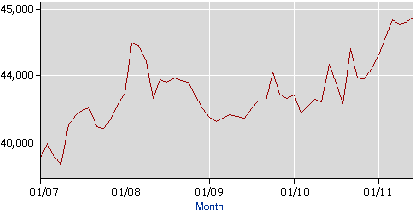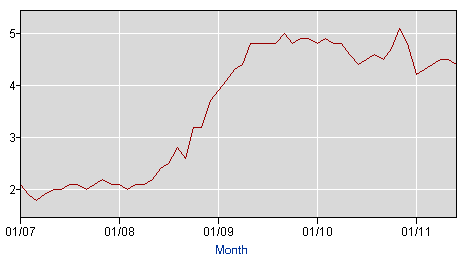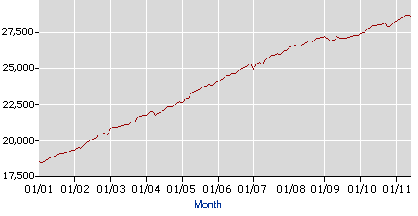July 27, 2011
I’m glad to see that Casey Mulligan responded to my earlier post responding to his argument that the rise in employment among seniors indicates that the overall drop in overall employment is explained by supply factors, not demand factors. I countered by pointing out that if this were true, then we would expect that there was decline in earnings for seniors relative to earnings for other workers. The data show the opposite, median weekly earnings for seniors actually rose somewhat more rapidly than for prime age workers (ages 25-44).
Mulligan counters by arguing that if it was a demand shift then it is difficult to explain the fact that the unemployment rate for seniors rose during the recession, albeit not as rapidly as for the population as a whole.
There are two problems with Mulligan’s analysis. First, there need be only a relative demand shift, not an absolute increase in demand to explain the events we are seeing. The idea is that employers are quicker to lay off newer employees, who tend to be younger, and to hold on to older employees. This may be both because they are more experienced and also simply due to institutional factors that lead employers to encourage loyalty.
An analogous situation can be seen with employment patterns among college grads. As can be seen, there has been some increase in employment among college grads since the recession began.

Source: Bureau of Labor Statistics.
However, note also that there unemployment rate has risen, as is the case with older workers.

Source: Bureau of Labor Statistics.
This can easily be explained by a shift in relative demand, where less educated workers are laid off before college educated workers.
The other part of this story for both college educated workers and older workers is that there is a supply issue. There has been a long-term trend of rising employment rates among workers over age 55. Part of this is attributable to the fact that these workers are increasingly educated and are likely to have jobs where they are able and willing to work later in life. And part of the increase is undoubtedly attributable to fact that these workers are less likely to have pensions and retiree health care benefits than in past decades and therefore need to work to pay the bills.
The issue here is what do employment patterns look like relative to the trend. Here it is clear that there has been a falloff in the rate of employment growth. If employment of people over age 55 had stayed on its 2002-2007 trend, it would be about 400,000 higher today. This dropoff is approximately 2.7 percent of current employment among this group.

Source: Bureau of Labor Statistics.
This is consistent with the story that a senior workforce that is more highly educated and more committed to the labor market than was the case in prior years is having trouble finding jobs just like the rest of population. It sure looks like demand to me.







Comments